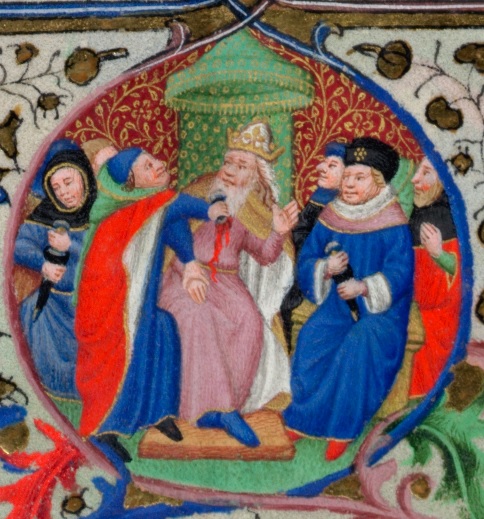Medieval lords were influential figures in medieval society, holding positions of power and authority over their lands and subjects. As such, it is not uncommon to wonder if these lords ever came into conflict with one another. In fact, medieval lords did frequently fight each other for a variety of reasons, including disputes over territory, political power, and personal animosity.
Causes of conflict between medieval lords
There 3 major causes of (internal) conflict: Territory, political power, and personal animosity. In the text that follows, we explore each of these a bit more.
Territory
One of the primary causes of conflict between medieval lords was the desire to expand and consolidate their power and territory. Many lords sought to expand their lands through military conquest, either by attacking neighboring territories or by taking advantage of the weakness of other lords.
For example, during the High Middle Ages, the Norman conquerors of England sought to expand their territory by attacking and subjugating neighboring kingdoms.
Political power
Political power was also a major factor in the conflicts between medieval lords. Many lords were involved in local and regional politics, and often competed with one another for positions of influence and authority.

In some cases, these political rivalries could turn violent, with lords using their armies or hired mercenaries to attack and undermine one another.
Personal animosity
Personal animosity was another factor that could lead to conflict between medieval lords. In a society where personal honor and reputation were highly valued, it was not uncommon for lords to become embroiled in personal disputes and vendettas.
These disputes could range from simple disagreements over matters of protocol or etiquette to more serious issues such as allegations of betrayal or dishonor.
External threats
In addition to these internal conflicts, medieval lords also faced external threats from other powers and external enemies. During the Middle Ages, Europe was a volatile and often violent place, with many lords and kingdoms constantly at war with one another. These wars were often driven by territorial expansion, religious differences, and political rivalries.
Hundred Years’ War – a famous example
The Hundred Years’ War was a long and brutal conflict that took place between England and France during the Middle Ages. It is considered one of the most famous examples of conflict between medieval lords, as it involved the rulers and nobles of both countries.

The war began in 1337 and lasted for 116 years, ending in 1453. It was characterized by a series of brutal battles and sieges, as well as the use of complex strategies and tactics by both sides. The conflict saw the involvement of many influential figures, including kings, queens, and nobles, as well as the use of large armies and hired mercenaries.
The main cause of the Hundred Years’ War was the desire of the English kings to assert their claim to the French throne. The English kings believed that they had a right to the French throne due to their descent from William the Conqueror, who had conquered England in the 11th century. The French, however, resisted this claim and the conflict escalated into a full-scale war.
During the war, the English were initially successful and were able to conquer much of France, including the regions of Gascony, Calais, and Aquitaine. However, the French eventually regained the upper hand and were able to drive the English out of much of their territory. The conflict ultimately ended in a victory for the French, with the English losing control of much of their territory in France.
Despite the long and brutal nature of the war, it ultimately had little lasting impact on the balance of power between England and France. Both countries continued to thrive and develop during and after the war, and the conflict eventually faded into the history books as just one of many examples of the conflicts and rivalries that characterized medieval Europe.
Local conflicts and disputes between medieval lords
In addition to large-scale wars, medieval lords also engaged in more local conflicts and disputes. These could be over small territorial issues, such as boundary disputes or access to resources, or more significant issues such as succession or inheritance. In many cases, these local conflicts could escalate into larger and more serious disputes, leading to full-scale wars and battles.
One way in which medieval lords attempted to resolve local conflicts and disputes was through the use of mediation and arbitration. In these cases, a neutral third party, such as a bishop or a respected noble, would be brought in to help the parties reach a mutually satisfactory resolution.

Mediation and arbitration were often seen as preferable to full-scale wars and battles, as they allowed the parties to resolve their differences peacefully and without the loss of life and resources that often accompanied armed conflict. However, not all conflicts could be resolved through mediation and arbitration, and in these cases, the parties were often forced to resort to more violent means of resolving their differences.
Cooperation and collaboration
Despite the frequent conflicts between medieval lords, there were also instances of cooperation and collaboration. Many lords formed alliances and made agreements with one another in order to achieve common goals or to protect their interests.
These alliances could be formal, such as through treaties or marriage alliances, or more informal, such as through shared interests or common enemies.
Conclusion: The complex nature of relationships between medieval lords
Medieval lords did indeed fight one another, either directly or through proxies, for a variety of reasons. These conflicts could be driven by a desire for territory and power, political rivalries, personal animosity, or external threats.
However, there were also instances of cooperation and collaboration between medieval lords, as they sought to protect their interests and achieve common goals.
